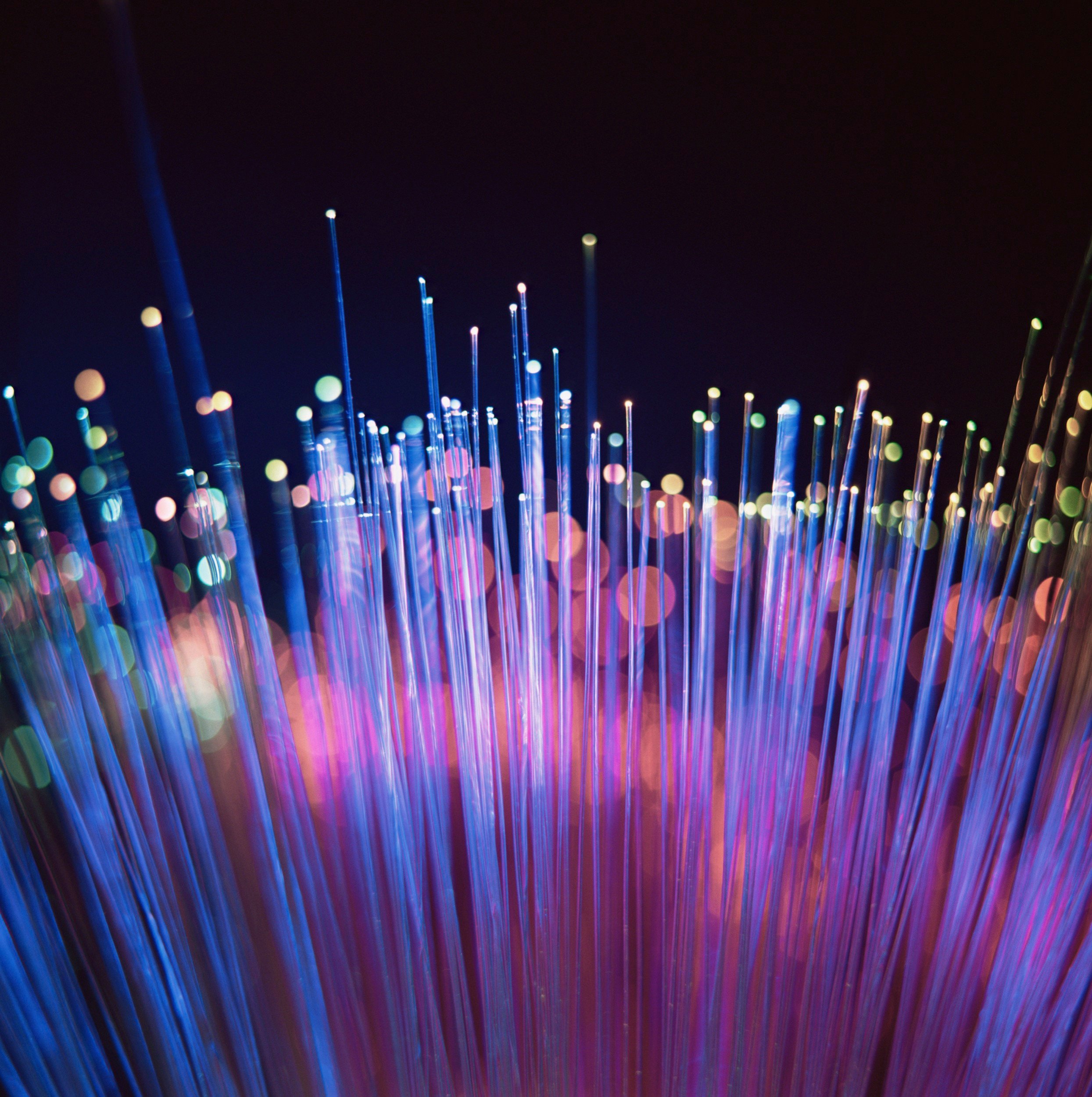Your mobile phone gets reception in a packed stadium with 70,000 fans thanks to a distributed antenna system. DAS technology emerged in the late 1980s and has become crucial for carrier cellular networks and enterprise infrastructure, especially where reliable wireless coverage and public safety communications are essential.
Large buildings like offices, shopping centres, and hospitals use distributed antenna systems to improve signal strength. The technology helps provide cellular coverage and data capacity in crowded areas where signals typically become weak. A DAS system differs from Wi-Fi networks because it focuses on boosting mobile signals throughout buildings. The system works through a network of distributed antenna elements placed at specific spots to amplify cellular signals and improve the coverage area. These systems adapt to different spaces, from small areas of 100 square metres with passive solutions to massive venues like the 2.47 million square feet that served 170,000 CES attendees.
This article covers everything you need to know about DAS systems, from basic concepts to how they operate, the types available, and where they are commonly used. Understanding DAS technology and related Wireless Coverage Solutions, such as signal boosters, mobile repeater options, and bi-directional amplifiers, can help you solve coverage issues and create seamless connectivity for everyone in your facility, whether you manage a hospital, stadium, or corporate building.
How a DAS System Works in Buildings
A distributed antenna system works as a network of carefully placed antennas that boost wireless connectivity inside buildings. The system tackles two different needs: improving signal coverage where reception is poor and increasing network capacity in busy locations. In the context of cellular in-building coverage, DAS complements the macro cellular network by bringing the signal indoors.
Signal Reception and Rebroadcasting Process
DAS works by capturing existing cellular signals from outside or generating them internally. It then distributes these signals throughout a building. The system starts with a central hub or master unit that connects to a carrier’s network and controls signal distribution.
This central unit takes wireless signals, strengthens them with amplification stages similar to bi-directional amplifiers, and sends them through a transmission line and cable network to antennas placed around the building. The master unit can combine signals from multiple carriers and prepare them for distribution. Advanced systems convert radio frequency transmissions into digital or optical signals to send them effectively over longer distances. These signals change back to RF format before reaching user devices, ensuring smooth connectivity even in spots that were once problematic and supporting 5G connectivity where available.
Role of Antennas and Cabling in DAS
Antennas broadcast and receive wireless signals between devices such as smartphones. They come in two main types: omnidirectional antennas that provide 360-degree coverage and directional panel antennas that focus signals in specific directions.
The cabling system acts as the backbone of every DAS installation. Three main types of cables are commonly used:
- Coaxial cables for traditional signal transmission
- Fibre optic cables for fast transmission of large data volumes without signal loss
- Ethernet cables in some active DAS configurations
Splitters help distribute signals to multiple devices, and connectors join various cables to antennas. In passive designs, passive splitters and couplers manage power levels to each antenna. In active designs, active repeaters and remote radio units provide controlled amplification across floors. This infrastructure works together to extend service by relaying cellular signals from devices to carrier networks.
Difference Between Coverage and Capacity
Coverage and capacity solve different challenges, though people often mix them up. Coverage refers to the area where devices can reach the network and mainly deals with signal penetration issues caused by building materials like concrete or low-E glass.
Capacity is about the amount of traffic a network can handle at once. Stadiums during major events often face capacity issues rather than coverage problems. Network congestion can happen even with strong signals if too many users connect simultaneously.
A well-designed DAS addresses both by providing targeted coverage and enough bandwidth for multiple simultaneous connections. It also supports public safety requirements, such as consistent indoor radio performance for first responders.
Types of DAS Systems
Distributed antenna systems come in several configurations, each designed for specific coverage needs and budgets. Understanding these will help determine which suits your facility best. Collectively, these platforms are often referred to as Cellular Distributed Antenna Systems.
Passive DAS Using Coaxial Cable and Splitters
Passive DAS offers the simplest approach to signal distribution. It relies on passive RF components like coaxial cables, passive splitters, taps, and couplers to distribute cellular signals throughout a building.
The main advantages are cost and simplicity. Multiple carriers can operate simultaneously without additional equipment, and maintenance is straightforward. However, signal quality drops over long cable runs, which limits its use in larger facilities without careful transmission line design and link budget planning.
Active DAS with Fibre Optic Distribution
Active DAS works differently from passive systems. It converts radio frequency transmissions into digital or optical signals compatible with fibre or Ethernet cables.
A master unit sits at the system’s core, combining signals from multiple carriers and converting them for transmission. The signal travels through fibre optic cables to remote radio units that change it back to RF signals for broadcasting.
Larger venues benefit from active DAS because fibre optic cables transmit signals over much longer distances without quality loss. These systems also provide better control for 5G connectivity and multi-operator environments, but they require greater upfront investment than passive systems.
Hybrid DAS Combining Fibre and Coaxial
Hybrid DAS combines elements of both passive and active systems. Each floor typically has a remote radio unit that converts digital signals to analog RF, which then connects to multiple antennas via coaxial cable.
This configuration costs less than a fully active system and eliminates the distance limitations of a purely passive setup. The trade-off is complexity, as it requires managing both fibre and coaxial infrastructure across the coverage area.
Digital DAS with Signal Packetisation
Digital DAS represents the most advanced form of the technology. It converts carrier signals into digital packets before transmission, offering high performance with reduced interference.
Digital DAS stands out for its capacity steering feature. It can dynamically allocate signal resources to specific areas as needed. When both the signal source and DAS platform support the Common Public Radio Interface, the Baseband Unit can communicate directly with the DAS master unit without analog RF conversion, improving efficiency in dense environments.
Signal Sources for DAS Systems
A DAS system’s performance depends largely on its signal source, where the cellular signal originates. The quality of this input determines how well the entire system performs and how it integrates with the macro cellular network and any on-site signal boosters or mobile repeater solutions.
Off-Air Signal from Rooftop Donor Antenna
Off-air systems use a donor antenna on the building’s roof to capture signals from nearby cell towers. This is the most common approach as it is cost-effective, requires minimal carrier involvement, and can support multiple carriers simultaneously.
The main limitation is that the system’s performance depends on the strength and quality of the external signal. These setups also do not add network capacity; they simply extend coverage. Carriers may require retransmission agreements before deployment.
Carrier Provided BTS or Node B Signal
Carrier-provided Base Transceiver Stations, NodeB, eNodeB, or gNodeB sources generate cellular signals directly and connect to a carrier’s core network via dedicated fibre.
They deliver excellent performance for high-density venues such as stadiums but require significant space, cooling, and power. Each BTS unit can cost over $76,450 and take months to deploy.
Enterprise Small Cells as Signal Generators
Enterprise small cells, including femtocells, picocells, nanocells, and metrocells, create secure tunnels back to carrier networks through internet connections. Each small cell can handle around 200 users and cover between 5,000 and 15,000 square feet.
They are faster and cheaper to deploy than BTS setups, but scaling for thousands of users can be challenging. These systems also rely on a stable internet connection. In some scenarios, small cells are paired with bidirectional amplifiers or active repeaters to fine-tune indoor performance.
Mixing Signal Sources for Multi-Carrier Support
In some cases, venues combine signal sources, for example, using small cells for one carrier and off-air signals for others. This approach balances performance and budget, particularly in multi-carrier environments that require consistent cellular in-building coverage and 5G connectivity.
Where DAS Systems Are Used
DAS systems provide consistent connectivity in environments where traditional cellular networks fall short. They also support critical public safety communications by ensuring first responder radios and cellular devices work indoors.
Hospitals and Healthcare Facilities
Hospitals face challenges from lead-lined walls, dense infrastructure, and equipment interference. DAS supports telemedicine, patient monitoring, electronic health records, and clinical mobility. Reliable indoor wireless coverage also supports public safety operations and code response.
Stadiums and Large Event Venues
Sports venues rely on DAS to manage tens of thousands of simultaneous connections. It supports mobile ticketing, cashless payments, and fan engagement while keeping operations and security connected. The combination of distributed antenna elements and capacity steering helps maintain performance during peak demand.
Airports and Transportation Hubs
Airports depend on DAS to maintain connectivity across terminals and underground levels. It supports flight updates, mobile ticketing, passenger Wi-Fi, and staff communication. DAS can be integrated with signal boosters in hard-to-reach areas and aligned with public safety radio requirements.
Corporate Offices and High-Rise Buildings
Office towers often have poor indoor reception due to modern building materials. DAS eliminates dead zones and boosts productivity by ensuring staff can stay connected anywhere inside. Hybrid architectures using active repeaters on each floor with coaxial runs to antennas are common.
Underground Garages and Tunnels
DAS is essential for underground facilities such as tunnels and car parks, ensuring coverage and communication in areas where traditional mobile networks cannot reach. Proper transmission line design, antenna placement, and passive splitters maintain continuous service along these corridors.
How MobileCorp Can Help
At MobileCorp, we design, build and maintain Cellular Distributed Antenna Systems that keep businesses connected no matter how complex the environment. The team delivers end-to-end Wireless Coverage Solutions for retail, construction, education, and government across Australia.
We assess each site’s coverage area, evaluate signal sources and advise on the right architecture. This includes passive DAS with coaxial and passive splitters as well as active or hybrid DAS platforms with fibre backbones and active repeaters. We also integrate complementary technologies such as signal boosters, mobile repeater options and bi-directional amplifiers to enhance 5G connectivity and cellular in-building coverage.
Speak with MobileCorp to discuss a fit-for-purpose DAS that complements the macro cellular network and delivers reliable indoor wireless coverage for your people and the public who rely on your facility.
DAS Michelle Lewis 23 Oct 2025
Related Posts
Popular Tags
- Mobility (81)
- Mobile Devices (79)
- Telstra (66)
- 5G (64)
- MobileCorp Managed Services (55)
- Mobile Network (34)
- Networks (34)
- Cradlepoint (32)
- Apple (29)
- MobileCorp (29)
- iPhone (25)
- Remote Working (23)
- Network (17)
- Covid-19 (16)
- Mobile Security (15)
- Wireless WAN (15)
- Cyber Security (14)
- UEM (14)
- MDM (11)
- Mobile Expense Management (10)
- Mobile Device Management (9)
- TEMs (9)
- Mobile Device Lifecycle (8)
- Cloud (7)
- Unified Comms (7)
- Unified Communications (7)
- Wandera (7)
- Android (6)
- Sustainability (6)
- Data Networks (5)
- Network Security (5)
- Samsung (5)
- Security (5)
- Digital Experience (4)
- IOT (4)
- Microsoft Intune (4)
- Blog (3)
- IT Services (3)
- Microsoft (3)
- Data (2)
- Government (2)
- Microsoft 365 & Teams (2)
- Retail (2)
- nbn (2)
- webinar (2)
- 4G (1)
- DAS (1)
- EMM (1)
- Emerging Technologies (1)
- Hosted Telephony (1)
- Managed Desktops (1)
- SD-WAN (1)
- Starlink (1)
- Telstra Services (1)
- WWAN (1)
- video (1)


